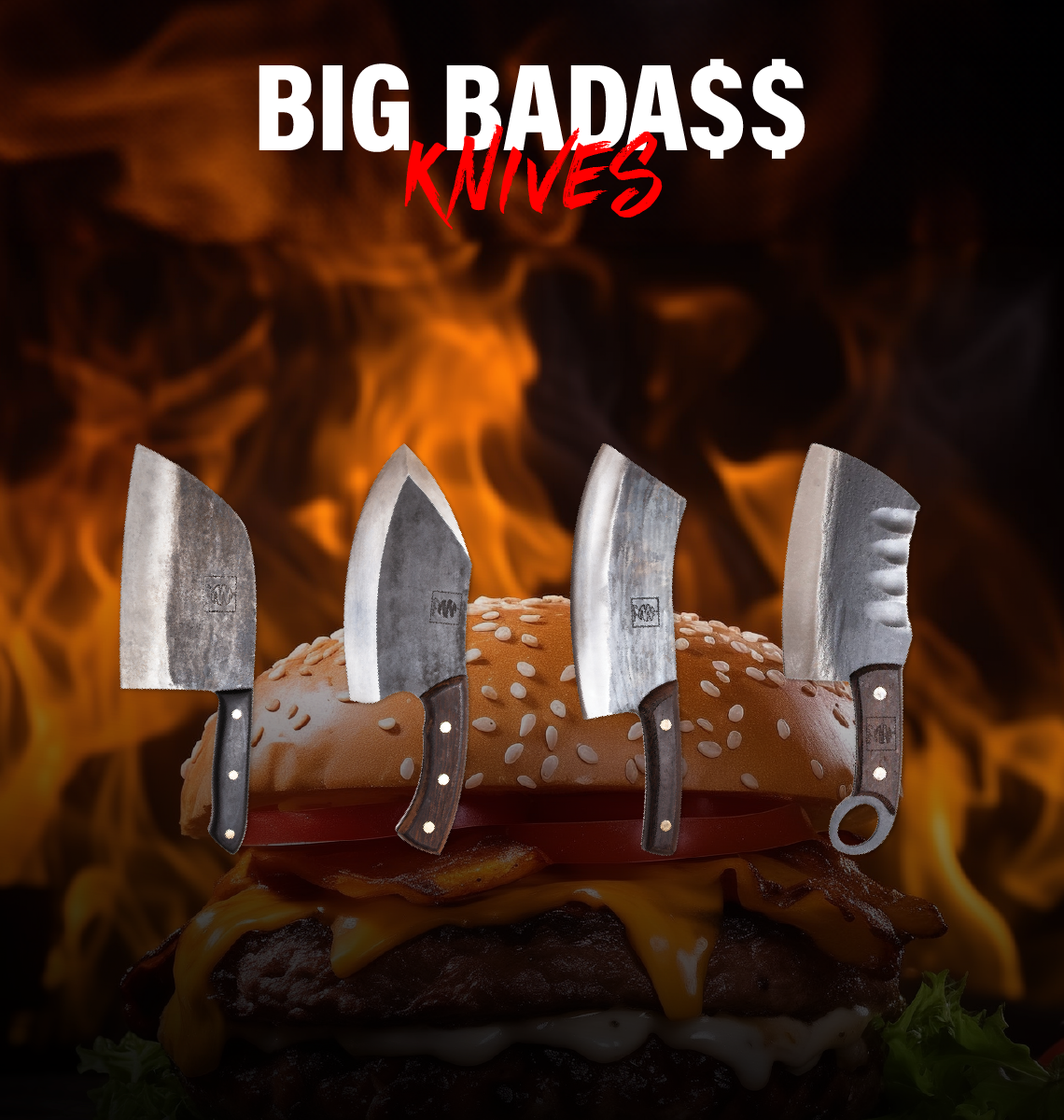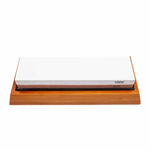How to Correctly Use a Cleaver Knife

Cleaver knives tend to be favorites amongst professionals but regular cooks shouldn’t be intimidated by them at all. They might look tough but they’re just gentle giants of your knife collection. You just need to know how to use them correctly and today we’re going to teach you how. But before getting into that, let me quickly summarize cleavers for you. A Cleaver is a relatively large knife that can vary in its shape but usually has a rectangular blade. It is often used as a kitchen or butcher knife intended for hacking through thin or soft bones and sinew as well as thicker vegetables. A lot of chefs prefer cleavers to their chef's knives since they can be more versatile and practical. Here is one:
Now, cleavers are great knives to have and it's a shame to not know how to use them properly as well as a hazard for you. So let’s learn how to use a cleaver knife correctly.
Set up your cutting board
A thick wooden chopping board is crucial when it comes to using a cleaver. Your board should be sturdy and unwarped and it should sit stably on your counter. You don’t want it to slide around while you’re operating a heavy Cleaver.
The grip
Start by holding the cleaver handle close to the blade, then place the thumb on one side of the handle, where it meets the blade, and curl the remaining fingers over the other side of the handle. If you’re not cutting anything tough and you want more control, you can grip the handle of the knife where it meets the blade and place the thumb on one side of the blade and index finger on the other side. Make sure that the main grip pressure is distributed between the thumb and index finger.
Cutting meat
You need to let the weight of the cleaver do most of the work, but chopping motion itself should come from your wrist. Raise your arm slightly from the elbow and then bring it down on the meat, using your wrist to direct the knife and apply force. You can also try to hit it with the top third of the blade so that you can summon extra lever power if you don’t make it all the way through. And it’s not a shame to slice through it the second time. It takes some practice to gauge just how much force you need to supplement the cleaver’s weight.
Slicing meat
To evenly slice meat, you need to know the horizontal cutting technique. Here’s how it works:
- Grip the cleaver with the cutting hand
- Angle the cleaver so it is facing horizontally to the cutting board and meat
- Rest the free hand flat on top of the meat to stabilize it
- Keeping the cleaver horizontal, slice through the meat paying close attention to avoid cutting into the hand holding the meat
Mincing meat
This might take a couple of times to get it right, but you'll get there. Just make sure to frequently collect the meat and resettle it into a pile to achieve an even mincing finish. Here is what you need to do in order to mince meat:
- Grip the cleaver using the same method as for vegetables.
- With the freehand, place two or three fingertips (or palm) on the top blunt part of the cleaver blade
- Lift the cleaver, keeping the tip in contact with the board, and then bring it down, pivoting the blade constantly from one side to another and mincing the meat.
Tenderizing meat
This is very easy to do and a very important step when cooking meat. All you have to do is grip the cleaver, hold it upside down, and use the blunt edge of the blade to pound the meat in a crisscross pattern.
Slicing and chopping vegetables
There are actually lots of ways you can cut vegetables with a cleaver just like there are with chef’s knives. Some people use cleavers to only cut thicker food like watermelons. But they are actually great for slicing and dicing as well.
Grip the cleaver using the second method as mentioned above and slice the vegetable in a smooth, downward motion, lifting the cleaver clear of the cutting board each time before making the next slice. If it is more comfortable, use a gentle thrusting motion when slicing downwards. Then proceed to cut the vegetable into the required shape using the same method.
Transferring food is the most fun part of using cleavers. All you have to do is slide the cleaver underneath the vegetables, using the free hand to help scoop them onto the wide part of the blade and transfer them to the cooking vessel.
In conclusion: While it requires some practice, perseverance, and patience to master, knowing how to use a cleaver knife properly is a skill to have.














